Washington D.C. The Smithsonian Pollinator Garden highlights the critical importance of pollination in our world and provides actionable steps on how to help. The Urban Bird Habitat underscores how interconnected these two ecosystems are. Both are wrapped around the Smithsonian National Museum of Natural History and are FREE to visit.

Whether you are planning a trip to the Smithsonian Pollinator Garden and Urban Bird Habitat, or just interested in seeing it from afar, this post will show the eye-catching gardens and provide information on how to create your own pollinator garden. To assist in planning your trip, a Garden Travel Guide to the Pollinator Gardens is located at the end of the post.
Warning! Pollinating the Public
The Pollinator Garden runs along the eastern edge of the Natural History Museum turning the pedestrian causeway into an open-air museum focusing on the alliance between plants and pollinators. All the plants, grasses, and trees along the path provide nourishment and shelter to pollinating insects.
What is striking about the Smithsonian Pollinator Garden is how it attracts and educates even the casual passerby. With no gates or barriers to entry, this garden meets people on the sidewalk as they pass through and educates them with eye-catching displays.
In a way, you could say that the Smithsonian Pollinator garden is pollinating the public with knowledge as they walk through the space.
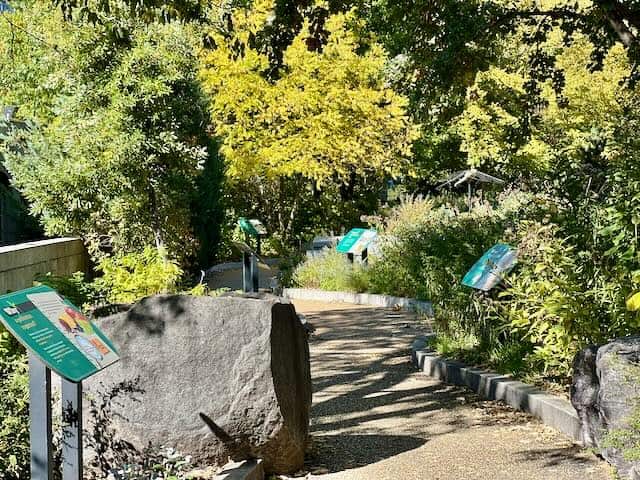
Previous garden visitors may remember this area as the Butterfly Habitat Garden. It was renamed the Pollinator Garden in 2016 to showcase a wider diversity of pollinators and highlight native plants for year-round interest.
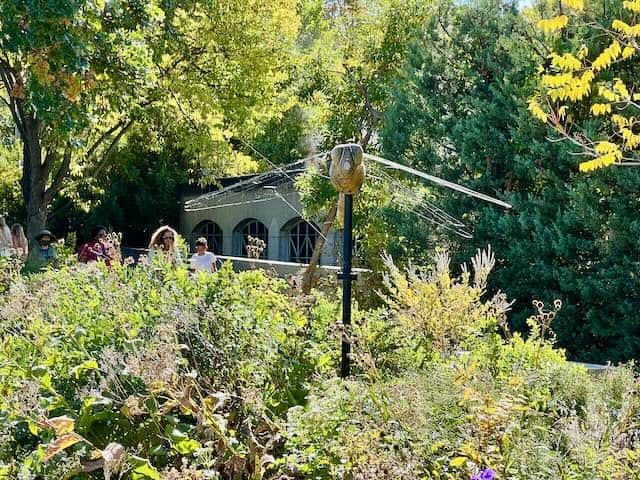
Overview of Pollinators in the Garden
Hummingbirds, butterflies, birds, and bees make this garden their home. How the Garden attracts and supports these critical creatures is key. Educating the public is the secret sauce.
Having evolved side by side over millions of years, plants and pollinators developed complex physical adaptations of mutual attraction. For example, did you know that:
Bees and a few other pollinators can see the ultraviolet (UV) part of the light spectrum. Flowers like Black-Eyed Susans that look uniformly yellow to humans actually have nectar guides that help pollinators quickly locate the center of each flower.
Smithsonian Pollinator Garden Website
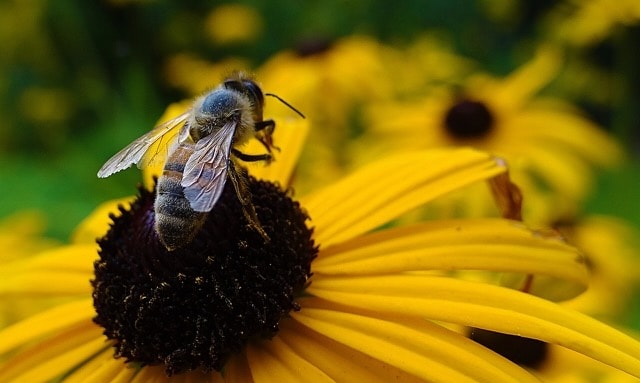
The Sexy Part
Yep, pollination and plant reproduction.
Pollen from a flower’s anthers (the male part of the plant) rubs or drops onto a pollinator. The pollinators then take this pollen to the next flower, where the pollen sticks to the stigma (the female part). The fertilized flower later yields fruit and seeds.
Smithsonian Pollinator Garden Website
Shake, Rattle, and Roll
Bees bite the anthers, hold tight, and buzz to shake the pollen out of the flowers.
Bumblebees are living tuning forks, using a middle C tone to propel thousands of pollen grains from a flower in under a second.
Smithsonian Pollinator Garden Website
(A fascinating display, The Hive, at the world-famous Kew Gardens in London has an interactive installation that is driven by the activity of real bees. One thousand LED lights glow and a musical symphony responds to bee activity. Appropriately, the music is performed in the key of C).
Plants have to do their part, too. It’s a year-round effort for the flowers.
Plants evolved with different flowering times to decrease competition among pollinators. The pollinators in turn benefit from a constant food supply. Isn’t Mother nature clever?
How to Create a Pollinator-Friendly Habitat
It’s not just up to the birds, bees, flowers, and the trees. The Smithsonian Pollinator garden shows visitors how to create a pollinator-friendly habitat that is both pretty and helpful. Here are a few suggestions from the Smithsonian Pollinator Garden about what you can do:
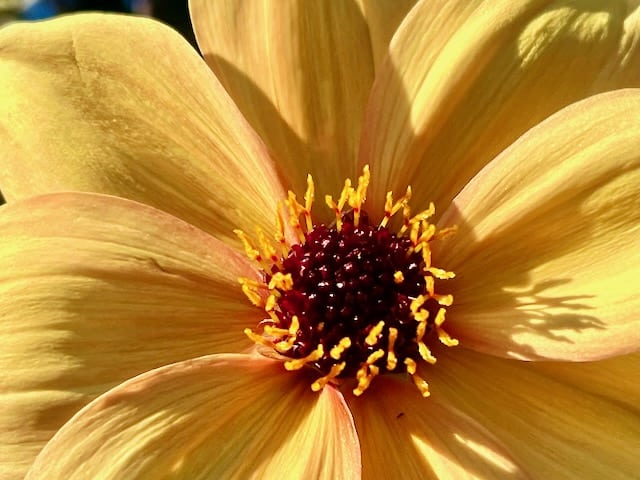
- Learn which native plants thrive in your region to attract insects: Ask at your local nursery, visit a botanical garden in your area, or call the local extension office to find the best plants.
- Go all in or just replace part of that grass lawn with native plants or create a Pollinator Lawn. It’s more interesting, and the bees will love you.
- Study the Pollinator Garden’s beautiful tapestry of native plants. or watch the video below for more ideas.
Urban Bird Habitat at the National Museum of Natural History
Native plants support native insects that support the native birds. It’s an all combined ecosystem and you can’t have one without the other.
Michael Alen, Horticulturist at the Smithsonian Garden
The Urban Bird Habitat wraps around three sides of the Smithsonian National Museum of Natural History. The garden plantings and grounds provide food, water, shelter, and a place to raise their young.

By providing for the basic habitat needs of these birds, Smithsonian Gardens hopes to preserve and promote bird diversity in the heart of the Nation’s Capital.
How to Create a Bird Sanctuary in Your Backyard
Birds behave differently at different times of the year. You can help birds find sanctuary in your home by:
- Leaving small piles of stems, twigs, and vines for nest materials.
- Filling depressions in rocks with water
- Leaving patches of bare ground for “dust baths” that rid birds of parasites.
- Leaving seed heads on plants for winter food
- Using native plants that provide beautiful flowers and delicious berries for birds
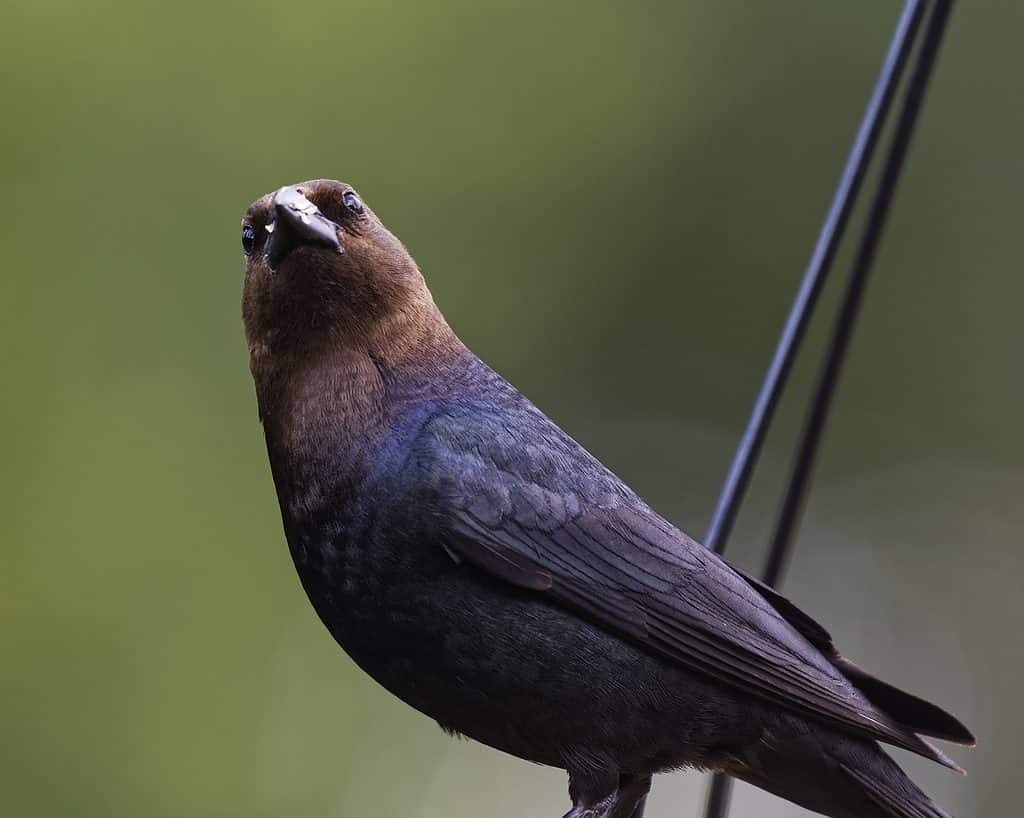
More Pollinator Garden Resources
Visit the Smithsonian websites for the Pollinator Garden and the Urban Bird Habitat.
Smithsonian Gardens step-by-step guide to creating a pollinator-friendly lawn at home.
Creating Beautiful Landscapes for Pollinator and Wildlife Habitats: Smithsonian Gardens to Your Front Yard James Gagliardi, Supervisory Horticulturist with Smithsonian Gardens shares beautiful images as he teaches about native plants you can use in your own garden.
Get a copy of the Pollinator Plants Handout referenced in Creating Beautiful Landscapes for Pollinator and Wildlife Habitats: Smithsonian Gardens to Your Front Yard.
For an informative Smithsonian Garden video about the Urban Bird Habitat, watch Nests.

Visitors Guide to the Smithsonian Pollinator Garden and Urban Bird Habit
Pollinator Garden 850 Madison Drive Northwest, Washington, DC 20004, USA. East side of the Smithsonian National Museum of Natural History.
How to Best Experience the Gardens
Pollinator Garden
Enter the Pollinator Garden from the National Mall. The landscape dramatically changes to suggest a natural garden. Note the type of shelters and plants the Smithsonian garden horticulturists have provided for the pollinators. Take pictures to implement the techniques at home. Exiting the Pollinator Garden turn left (west) on Constitution Avenue and walk to the Urban Bird Habitat at the end of the block.
Or, head inside the National Museum of Natural History (it’s FREE) and see the Butterfly Pavilion where you can stroll among live butterflies and exotic plants. I found the pavilion small, and ticketing and crowds off-putting, but it is a visitor favorite. Timed tickets under $10 are required for the exhibit.
Urban Bird Habitat
The Urban Bird Habitat wraps around the south, west, and north sides of the Smithsonian National Museum of Natural History, but the main display is on the corner of 12th St & Constitution Ave.
See and note what kind of plants the Smithsonian Garden horticulturists use to attract birds.
Overall, the Bird Habitat is smaller and less developed than other Smithsonian Gardens, but it has an admirable mission. A large vent in the Bird Habitat was loud and distracting, yet the bird chatter in the area was still audible.
Urban Bird Habitat. 12th Street Northwest & Constitution Ave NW, Washington, DC 20004, USA.
Parking at the Pollinator Gardens
There is very limited on-street parking available in areas near the gardens, including reserved spaces for visitors with disabilities. You can book guaranteed parking in nearby garages in advance with ParkWhiz. Public transportation is encouraged.
The closest Metro stations to the museum are the Federal Triangle Metro station, located on the Blue, Orange, and Silver lines; the Archives/Navy Memorial station on the Green and Yellow lines; and the Metro Center station on the Red line. View a map of the closest Metro stations.
Garden Hours and Admission
Admission to the Smithsonian Pollinator Garden and Urban Bird Habitat is FREE. They are not gated and viewable 24/7.
Refreshments and Food Near the Garden
Dolcezza
Walk across the mall to the Hirshhorn Museum. This is a destination coffee stop in the Hirshhorn museum lobby. Come for locally sourced and handcrafted gelato, specialty espresso drinks, and gourmet pastries. Admire the stunning contemporary setting designed by world-renowned artist Hiroshi Sugimoto.
Independence Ave SW &, 7th St SW, Washington, DC 20560. 0.3 miles (about a 7-minute walk) Smithsonian Pollinator Garden. Inside the Hirshhorn Museum lobby. Free to enter the museum and lobby.
Pavilion Cafe
For something to drink in a beautiful setting, head across the street (9th St. Expressway) from the Pollinator Garden to the Pavilion Cafe. Enjoy a beverage outside in the National Gallery of Art Sculpture Garden and explore the garden afterward. Although I don’t recommend the food, the Pavilion Cafe serves American-style entrees with Vegetarian, Vegan, and Gluten-Free Options.
9th St and Constitution Ave NW Sculpture Garden, Washington DC, DC 20565. 167 Feet (1-minute walk east) from the Pollinator Gardens.
Central Michel Richard
An American Bistro with a French Accent. Highly rated Washington restaurant for lunch and dinner. Vegetarian Friendly, Vegan Options, and Gluten Free Options
1001 Pennsylvania Ave NW, Washington DC, 20004-2505 0.5 miles (about a 10-minute walk) from Pollinator Gardens.
Fogo de Chão Brazilian Steakhouse
Recipient of the Travelers’ Choice Award 2022. The Beaux-Arts style façade invites guests into a space featuring two levels of dining, expansive bars, and soaring wine displays. Fogo elevates the cooking technique of churrasco – the art of roasting high-quality cuts of meat over an open flame – into a cultural dining experience. Gluten-Free Options. Lunch, Brunch, and Dinner.
1101 Pennsylvania Ave NW, Washington DC, DC 20004-2514 0.5 miles (about a 9-minute walk) from the Pollinator Gardens.
Where to Stay in Washington D.C.
Kimpton Hotel Monaco Washington DC
A Conde Nast Readers Choice Award winner in 2021. Centrally located Penn Quarter hotel — a beautiful juxtaposition between old and new elegance-meets-whimsy style.
700 F St NW, Washington, DC 20004. 0.5 miles (10-minute walk) from the Pollinator Gardens.
Riggs Washington DC
Recognized as the Best Hotel in Washington, D.C. in the World in the Travel + Leisure 2022 World’s Best Awards. Located in the historic former Riggs National Bank building, details throughout the hotel draw on a narrative inspired by the golden age of banking.
900 F St NW, Washington, DC 20004. 0.5 miles (10-minute walk) from the Pollinator Gardens.
Motto by Hilton Washington DC
Uniquely urban hotel featuring smart tech with a smaller, more efficient footprint in travel-sized rooms. Across the street from Gallery Place/Chinatown Metro station with links to Reagan National Airport.
627 H St NW, Washington, DC 20001. 0.8 miles (16-minute walk) from the Pollinator Gardens.
Author’s Note: My recommendations are not sponsored; they are my personal experience or researched suggestions.
Other Smithsonian Gardens Nearby
Cross the 12th Street Parkway to the west and you’ll be on the grounds of the Smithsonian National Museum of American History’s Victory Garden and the Common Ground Garden.
The Smithsonian Victory Garden is a food garden inspired by the victory gardens of World War II.
The Common Ground Garden continues the stories of plants and their importance to the nation’s people.
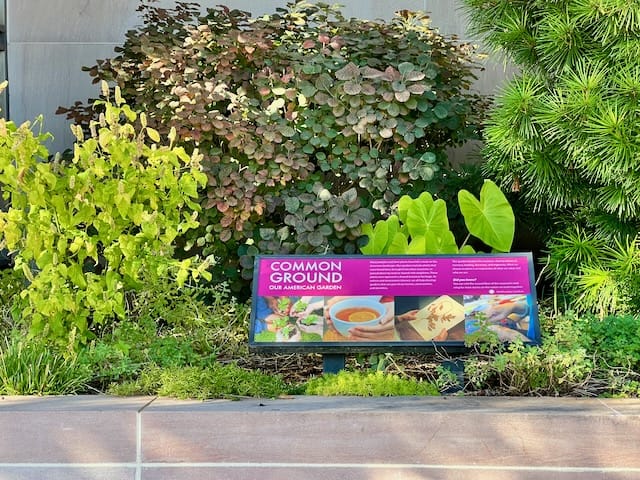
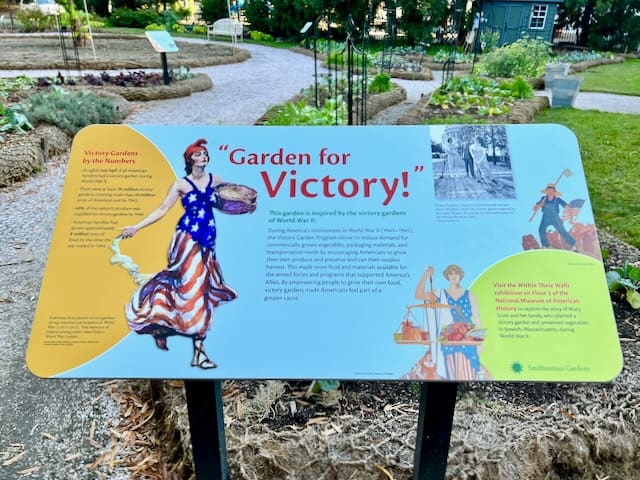
For Gardens on a grander scale, head across the National Mall to the Enid A. Haupt and Mary Livingston Ripley Gardens.
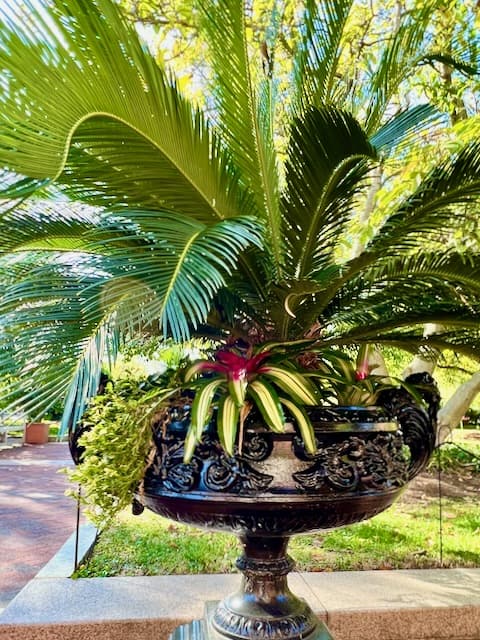

The Pollinator Garden and the Urban Bird Habitat are two of thirteen gardens featured in 13 Smithsonian Gardens You Can Enjoy for Free.
Recent Posts
Museums for All in Botanical Gardens and Arboretums Blooming with Access
Museums for All is an initiative that allows individuals and families receiving food assistance (SNAP EBT - Supplemental Nutrition Assistance Program Electronic Benefit Transfer) to gain free or...
San Diego Botanic Garden, Encinitas, CA: The San Diego Botanic Garden in Encinitas is a 37-acre sanctuary about a 30-minute drive north of the city of San Diego. Just a mile from the Pacific...
